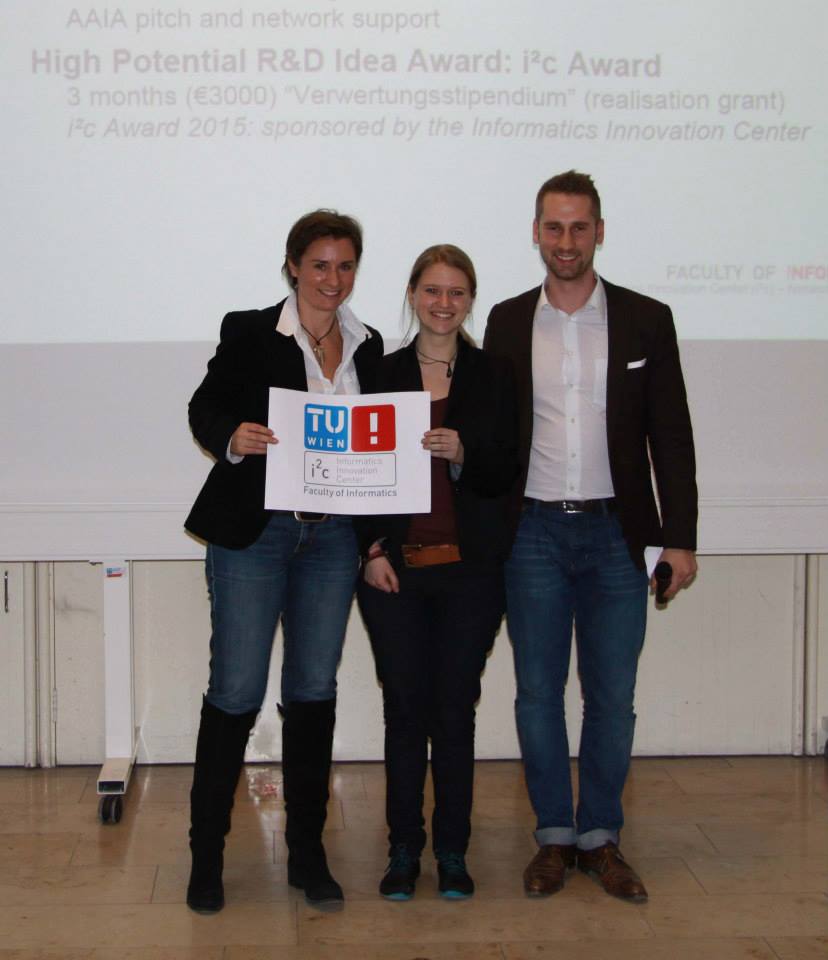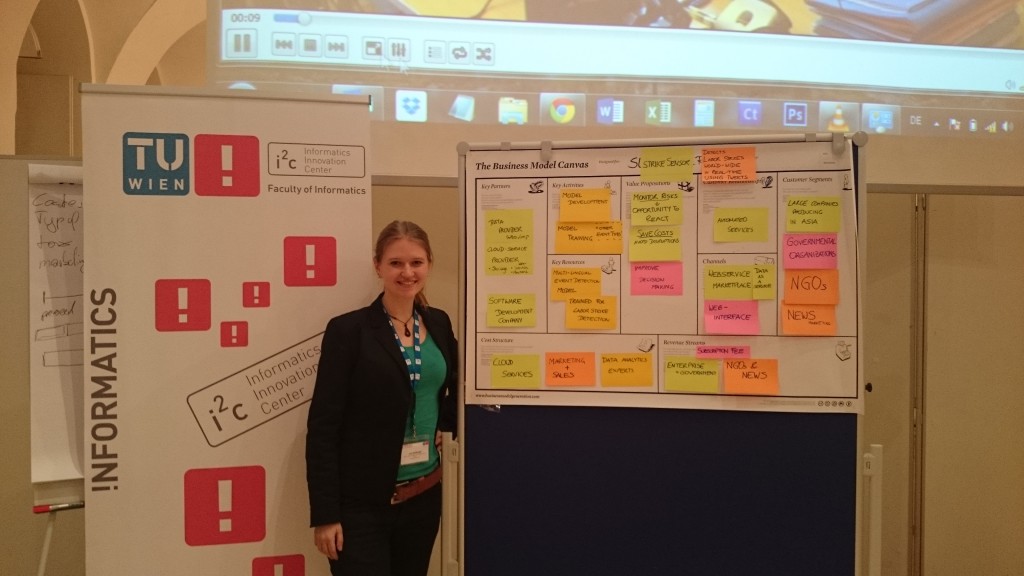Last week I attended an intense 4-day course on how to evaluate the business potential of your research and turn it into a startup.
It was an amazing time with lots of thinking, discussing and pitching. The i2c Innovation Center of the Vienna University of Technology provided us with 7 top experts every day who helped us to develop our business plan and to put this plan into a compelling 3-minute pitch.
With 12 to 16 hour days is was a lot of work but also a lot of fun.
In the end we got the opportunity to pitch our idea in 3 minutes to a jury of investors and experts and with my project StrikeSensor I won the High Potential R&D idea Award! Yeha!

Source: I2C Facebook Page
My notes and lessons learned from the Vienna University of Technology “i2c StartAcademy”
General
- Keep it simple. If you cannot explain it in a simple way you haven’t thought about it long enough. Sit down and try to get it clear in your mind.
Start-up – Business Plan Development
- “The lean start up” philosophy is the most promising approach up to date to start a business. It means you should check your hypotheses about customers needs as early as possible, find a lead customer, evaluate the scope of the problem in reality and test and co-develop your solution iteratively.
- Startups are not smaller versions of large companies, one of their main target is to search effectively for problems, solutions, people and customers.
- Most startups fail because their first contact with the customer is too late
- Startups don’t actually need a CFO, CIO, CTO …. but they do neet a customer development team
- Try to get a customer sign a constract before the product is available
- Find out why your customers would love to do business with you, thats your value proposition.
- Find out how you can generate excitement, thats the value architecture.
- Find out how you can earn money, thats your revenue model.
- Do not confuse product features with customer value. Find out what you get done for your customer. Find out the pains and the gains of your customer.
- The Business Model Canvas from Osterwalder is a good tool to structure your business model
Business Model Canvas for my project StrikeSensor
Pitching
- The purpose of a pitch is not only to sell a solution – but you sell your product, your technology, your passion and your team.
- A good structure for your pitch is (1) One-Liner e.g. “StrikeSensor detects labor strikes around the world in real-time” (2) Problem (3) Solution (4) Future Steps (5) Request
- Then follows the Question & Answer session, anticipate the questions prepare back-up slides!
- Important things to mention in your pitch: Whats the target customer and the size of the market? Whats special about the team, competences? What makes you different from other solutions? How can you access the target market, what is your network?
- If you don’t know the answer to a question refer to someone else in your team who knows it.
- Before the pitch: (1) Check the microphone (2) Check the clicker (3) Make eye-contact with the person moderating to get a sign to start
- Make the target clear to yourself, visualize the target in your mind, what do you want to achieve? you need to be 100% clear about that yourself.
- Make sure every part of your pitch, every slides is directed towards that goal.
- Show facts and metrics! State the business case, how much value/money can be gained/saved by your solution?
- After each pitch, reflect: what worked what didn’t work! Make it better next time!
- On the last slide: provide your logo, your company name, your name, your contacts!
Pricing & finances
- Main costs: R&D, Labor, Marketing, Production, Sales + Personal Expenses of founders (don’t forget that you need to live from it as well!), customer acquisition, Travelling
- Income: Price * customer
- Remember that there might be a difference in time, when costs occur and when you get the revenues
- Investors can raise the equity (in return for shares) or liabilities, low equity but high reliabilities can make it harder to get money from the bank in the future
- Good tools for Financial Planning: Plan4You provided by WKO, or BACA Business planer
- Don’t state numbers too detailed that seems unrealistic and unprofessional
- the goal of the business plan is to provide a rough picture where the journey is going, and how much money you need to request from investors.
- Sources of funding in Austria
- AWS: PreSeed: has to adress Venture Capitalists as investors, you should have an exit strategy
- FFG: funds 70% of costs as liability, 30% is covered by yourself, focus on applied science
- Others: Business Angels, Family Offices, Venture Capitalists, Banks, Crowd, Founders, Family
Marketing
- Start with active marketing & sales activities early!
- Useful Tools:
- hootsuite for cross-platform posting, helps you to manage social media audiences
- TweetDeck Monitor multiple keywords or timelines on Twitter
- Sproutsocial Social Media Management
- If this then that – IFTTT lets you create recipes (stored procedures) that automatically perform tasks for you, e.g. save your email attachments into dropbox, get an email when a profile pic changes..
- getsatisfaction.com – Social Media marketing software
- pr.co – A tool to format Press Releases
- Provide a press-kit on your website: logo, one-liner, short description of company (3-5 sentences)
- Read about Growth Hacking (marketing strategy for start-up, grow as fast as possible with low resources)
These were the most important lessons I took from last week, and at this point I want to thank all the mentors and i2c Innovation Center for providing us with that knowledge and the unique opportunity to take part in great programs like this one.
From March on I will attend a 3-semester course on Innovation, I am looking forward!
